Urban trees are an integral part of any cityscape, adding to the aesthetic appeal and offering multiple benefits to the residents. Let’s explore the top 10 common urban tree species found in Vietnam and their importance.
1 The Significance of Urban Trees
Urban trees play a vital role in enhancing the visual appeal of cities. Apart from their decorative function, they offer numerous advantages that positively impact the lives of city dwellers. Some of their notable roles include:
- Improving the quality of life for urban residents
- Helping people reconnect with nature
- Providing shade and protection from the harsh sun
- Purifying the air by absorbing pollutants and releasing oxygen
- Reducing noise pollution from vehicular traffic
- Mitigating flooding, a common issue in many cities
- Preventing soil erosion
- Guiding and controlling urban traffic flow
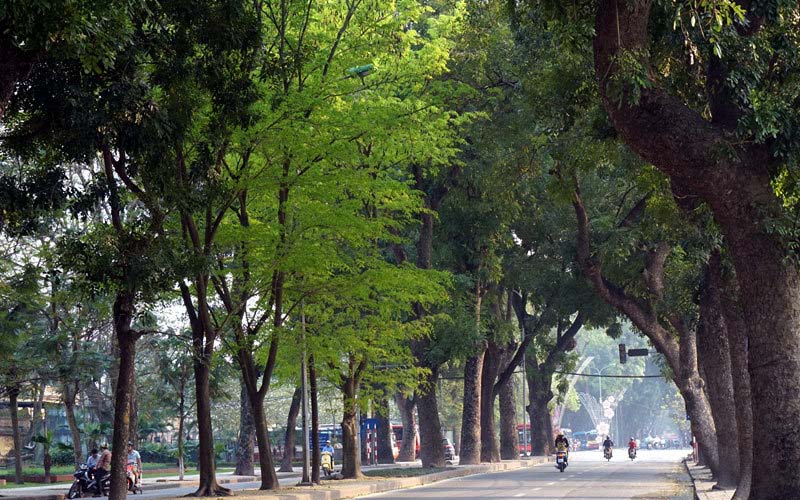 The Significance of Urban Trees
The Significance of Urban Trees
2 Top 10 Common Urban Tree Species
Depending on the regional conditions and preferences, different tree species are planted in urban areas across Vietnam. Here is a list of the most common and popular urban trees:
Blackboard Tree (Alstonia scholaris)
The Blackboard Tree is a common sight on Vietnamese streets, with its straight trunk, even and beautiful canopy, and ease of cultivation and maintenance. It is a popular choice for urban landscapes.
 Blackboard Tree
Blackboard Tree
Reference:
Indian Rain Tree (Samanea saman)
When it comes to large, majestic trees in urban areas, the Indian Rain Tree stands out. With a height reaching up to 30-40 meters and a trunk diameter of up to 2 meters, this tree not only enhances the beauty of the city but also provides a cool and pleasant atmosphere.
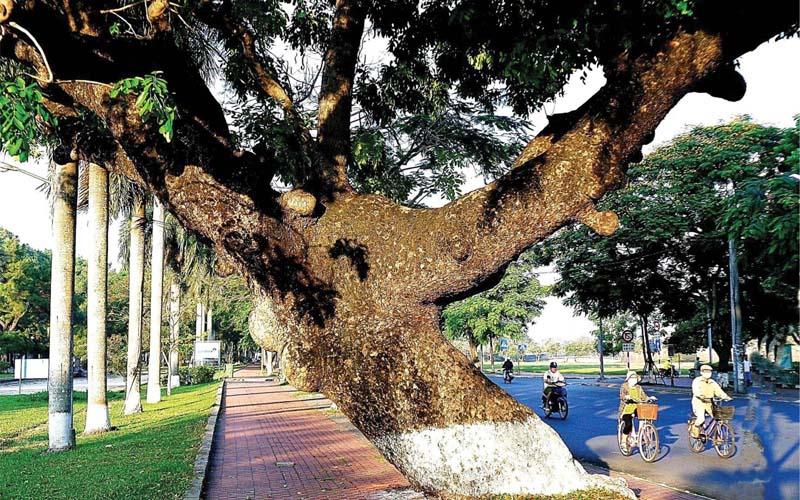 Indian Rain Tree
Indian Rain Tree
Reference:
Purple Orchid Tree (Tabebuia roseo-alba)
The Purple Orchid Tree is characterized by its rapid growth, tall stature (10-20 meters), and wide canopy. These features make it an excellent choice for providing shade in urban areas. Additionally, its beautiful flowers add a touch of poetry to the city streets.
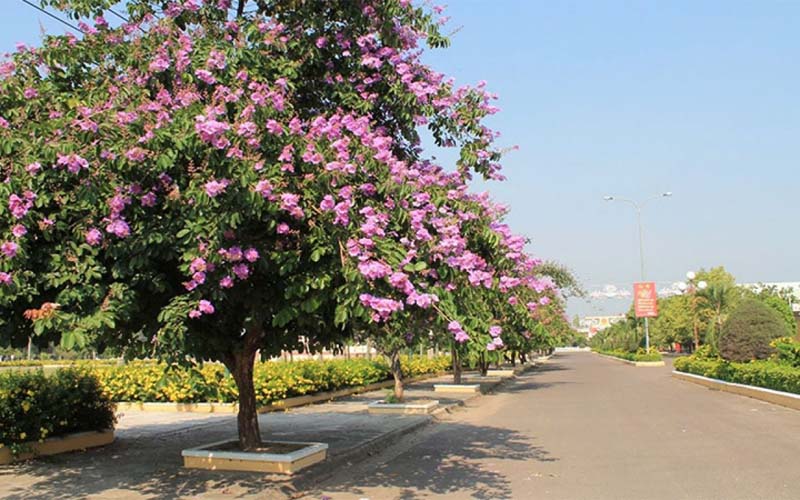 Purple Orchid Tree
Purple Orchid Tree
Reference:
Chinese Elm (Ulmus parvifolia)
The Chinese Elm is a common urban tree species in Vietnam, often chosen for plantings along sidewalks due to its straight trunk, soft branches, and round canopy. It tolerates sunlight well and is a popular choice for street plantings.
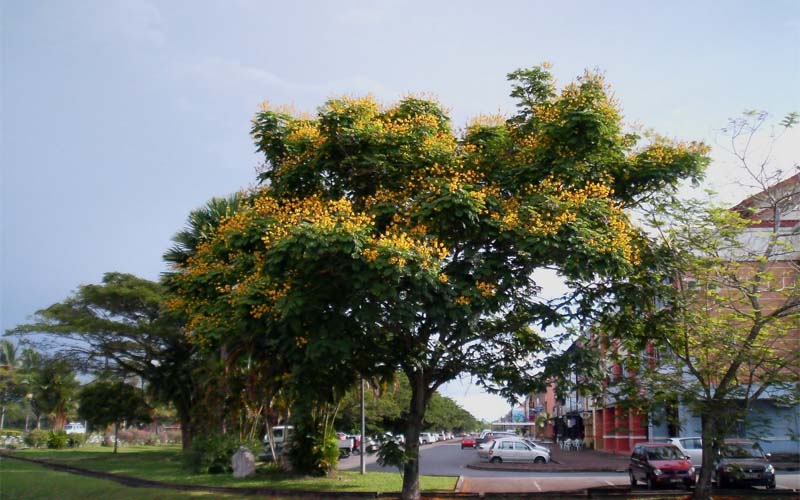 Chinese Elm
Chinese Elm
Golden Shower Tree (Cassia fistula)
The Golden Shower Tree is a medium-sized tree, growing to a height of 5-10 meters with a low-hanging canopy and long, slender leaves. It is highly adaptable and often chosen as a natural fence or boundary marker.
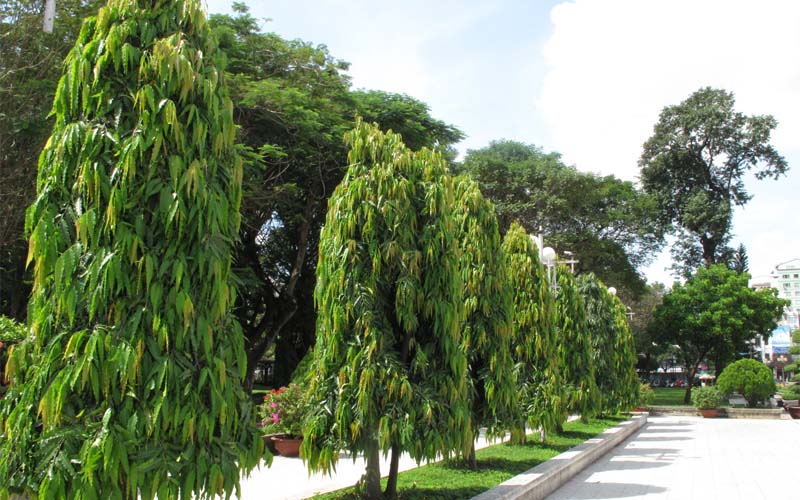 Golden Shower Tree
Golden Shower Tree
Reference:
Indian Bean Tree (Catalpa bignonioides)
The Indian Bean Tree is a long-lived species with significant cultural and spiritual value in feng shui. It is commonly planted in urban parks and landscapes, offering a wide canopy, beautiful and fragrant flowers, and a relaxing atmosphere.
 Indian Bean Tree
Indian Bean Tree
Reference:
West Indian Mahogany (Swietenia mahagoni)
Also known as Pink Poui or Caribbean Rosewood, the West Indian Mahogany is native to the Americas and is widely used for urban landscaping in Vietnam. It features a broad canopy and attractive pink flowers with a sweet fragrance, making it a favorite among investors and developers.
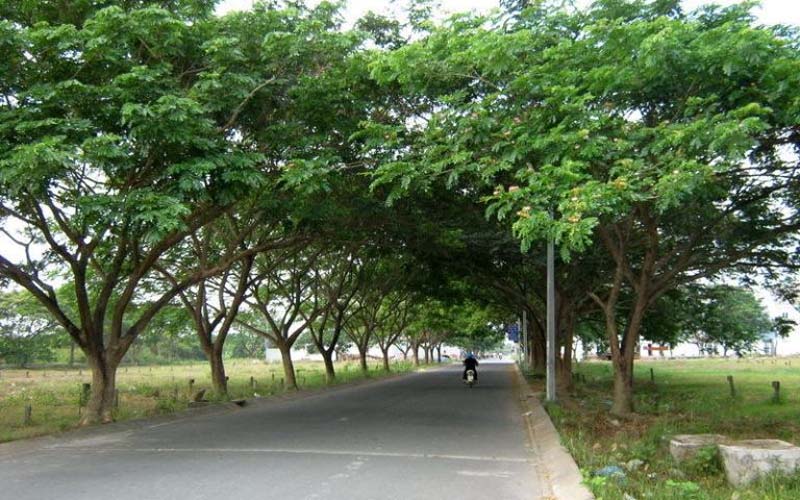 West Indian Mahogany
West Indian Mahogany
Reference:
Flamboyant Tree (Delonix regia)
The Flamboyant Tree is a familiar sight to many students and scholars, with its large trunk, height ranging from 10-20 meters, and a wide, lush canopy. It bears bright red flowers during the summer, adding a touch of color to the urban landscape.
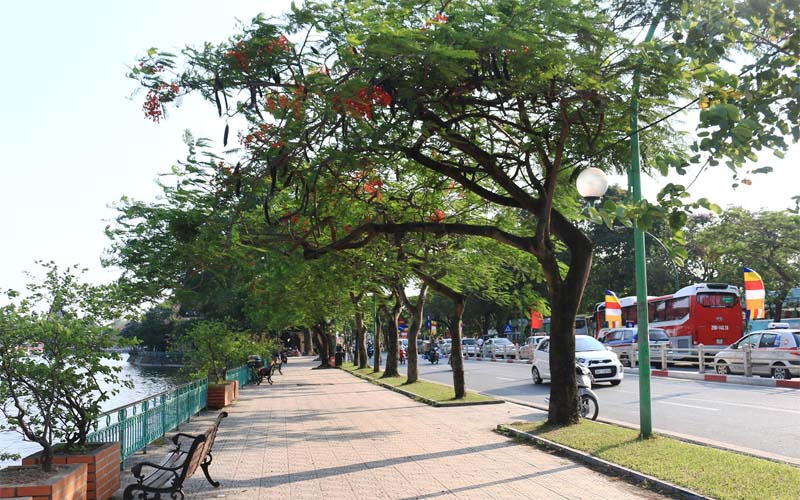 Flamboyant Tree
Flamboyant Tree
Reference:
Chinese Banyan (Ficus microcarpa)
The Chinese Banyan is one of the most commonly used trees in urban areas, especially in Hanoi. It provides shade and a sense of antiquity to the city. Its distinctive features include a broad and sparse canopy, coupled with vibrant green leaves and a beautiful trunk. The Chinese Banyan has become an integral part of many children’s urban upbringing.
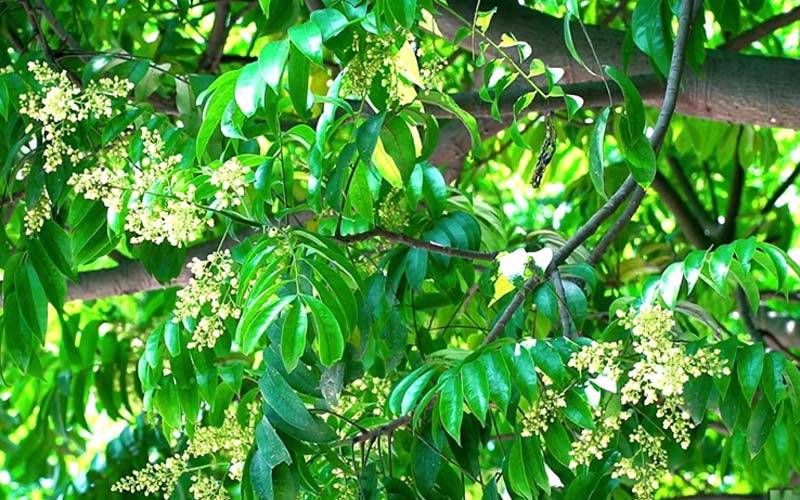 Chinese Banyan
Chinese Banyan
Camphor Tree (Cinnamomum camphora)
The Camphor Tree is a popular choice for urban landscapes, reaching a height of 20-30 meters with a lush canopy. It effectively absorbs heavy metals and air pollutants, making it a favored species for improving the urban environment.
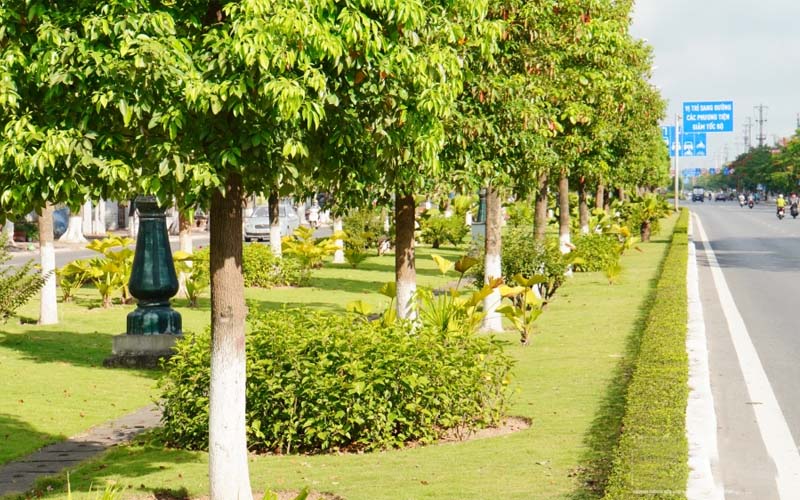 Camphor Tree
Camphor Tree
We hope you found this overview of Vietnam’s top 10 common urban tree species informative and interesting.

































